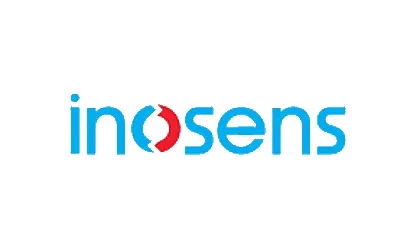Events
5 June 2024 09:00 - 13:00 (UTC+3) | 10 July 2024 10:00 - 11:30 (UTC+3) | 17 July 2024 10:00 - 11:30 (UTC+3) | 25 July 2024 10:00 - 11:30 (UTC+3) | 25 September 2024 13:00 - 16:00 (UTC+3) |
First Term Review | Korean Consortium and TAV Tech Optimization Algorithms will be introduced | Knowledge sharing: Block-chain based storage techniques | Knowledge sharing: Data-trust provisioning structures | Online Project Promotion Event |
|
SOCFAI
SOCFAI project focuses on airports and addresses the problems caused by the collaborative and multi-stakeholder nature of their operations. This is providing new ways to manage the operations cycle, enable real-time common situational awareness of all aspects of airport operations, optimise different core processes, enable predictive and fully integrated operations management and facilitate customer service management and orientation, all while trying to improve overall customer satisfaction levels by introducing an open-source framework equipped with technologies such as AI, Computer Vision, VR, IoT, LIDAR, etc.

Rationale of the SOCFAI

Resource Inefficiencies
Resource inefficiencies in airport operations occur when there is a mismatch between available resources such as gates, runways, and staff, and the demand for those resources, leading to underutilization or overloading. This can result in longer waiting times for aircraft, passengers, and baggage, causing delays, congestion, and increased operational costs.

Flight
Delays
Flight delays in airport operations can stem from factors like adverse weather conditions, air traffic congestion, and technical issues. These delays can disrupt schedules, increase operational costs, and lead to passenger frustration, affecting overall customer satisfaction and potentially causing cascading delays throughout the aviation network.

Lack of Communication
The absence of real-time communication between operational stakeholders in airport operations can lead to misalignment and coordination breakdowns among various entities such as airlines, ground handling services, and air traffic control. This can result in inefficient resource allocation, longer turnaround times for aircraft, missed opportunities for optimizing operations, and ultimately, delays in flights, negatively impacting passenger experience and the overall operational efficiency of the airport.

Stakeholder Conflicts
Operational stakeholders conflicts in airport operations arise when different entities, such as airlines, ground handling services, and security, have divergent goals or incompatible processes. These conflicts can lead to inefficient resource allocation, delays in operations, compromised safety measures, and strained relationships among stakeholders. Such conflicts can disrupt the smooth functioning of the airport, resulting in operational inefficiencies, decreased customer satisfaction, and potential financial losses.

Environmental Effects
Environmental factors in airport operations refer to the natural elements and conditions that can impact airport activities. These factors include weather conditions (like fog, snow, and storms), air quality, noise pollution, and wildlife presence. These environmental factors can lead to flight delays, cancellations, and diversions, as well as increased fuel consumption due to longer flight paths or extended waiting times. Moreover, noise pollution can affect nearby communities, leading to public complaints and potential regulatory restrictions. Addressing these environmental challenges is crucial for maintaining safe, efficient, and sustainable airport operations.

Regulation Differences
Regulation differences between countries in the airport business can encompass varying safety standards, operational procedures, and infrastructure requirements. These discrepancies pose challenges for technology providers who need to develop adaptable solutions that meet different regulatory demands, increasing development complexity and potentially limiting market expansion due to the need for customization and compliance adjustments.

Integration Complexity
Integrating a technology solution into airport operations involves navigating intricate processes like coordinating with existing airport systems, ensuring compatibility with diverse hardware and software setups, and accommodating specific operational workflows. Additionally, addressing security concerns, regulatory requirements, and the need for seamless data exchange adds complexity, demanding thorough testing, customization, and collaboration with various stakeholders for successful implementation.

Energy
Waste
Energy waste in airport operations refers to the inefficient use of energy resources within the airport infrastructure and processes. This can occur due to factors like outdated equipment, poor energy management systems, excessive lighting or HVAC usage, and inadequate insulation. Energy waste not only leads to increased operational costs for the airport but also contributes to higher carbon emissions and environmental impact, undermining sustainability goals and posing financial and ecological challenges in the long run
Process
Project
Born
The project idea was developed by TAV Technologies, inspired by the TAM project realized within the scope of Horizon.
PO
Stage
The project was prepared with the participation of 25 different partners from 6 countries and presented to ITEA4, and then approval was received for PO stage.
FPP
Stage
Project changes proposed by ITEA4, budget, business plan and similar planning studies were carried out and the final project application was made.
National Approvals
After the approval of the FPP, each country consortium presented the project to their local funding authorities. As a result of the evaluation, the project was initiated with the participation of 3 countries and 10 partners.
Project Start
The project was officially launched on 1 July 2023. Demonstrations will be published as research and development studies are carried out.
Project Closure
Project will be completed on 30 June 2026.
Project Partners









